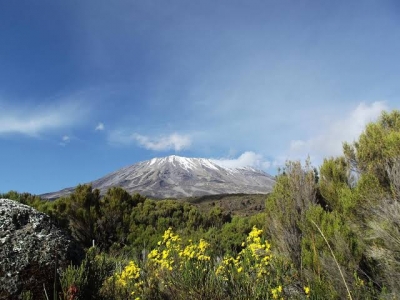
If you were to travel up a mountain and observe the plants on the way, you would see that there is a huge difference in vegetation at different levels. These levels contain distinct kinds of vegetation that are different from the next.
In high mountains like Mt Kilimanjaro in Africa, the experience can be likened to walking from the equator to Antarctica in a few days!
In fact Mt Kilimanjaro has five distinct ecological zones that show extremely diverse vegetation types. The first zone is the cultivated zone at the base of the mountain. Here you will find crops such as coffee and a variety of tropical fruit plants.
Further up is the forested zone where you will find orchids, ferns, and camphorwood trees. Then comes the moorland zone where heath-like vegetation and wildflowers grow. The next region is the Alpine desert zone where only mosses and tussock grasses grow. The last and most extreme zone is called the Arctic zone where no plant or animal lives exist.
A mountain range such as the Alps would also show a similar trend. The first zone would have agricultural land. The next would be a forested belt. This zone also marks the tree line, beyond which no trees can grow. The third would be an alpine meadow and finally at the top a region of permanent snow and ice with no plant life whatsoever.
Picture Credit : Google




